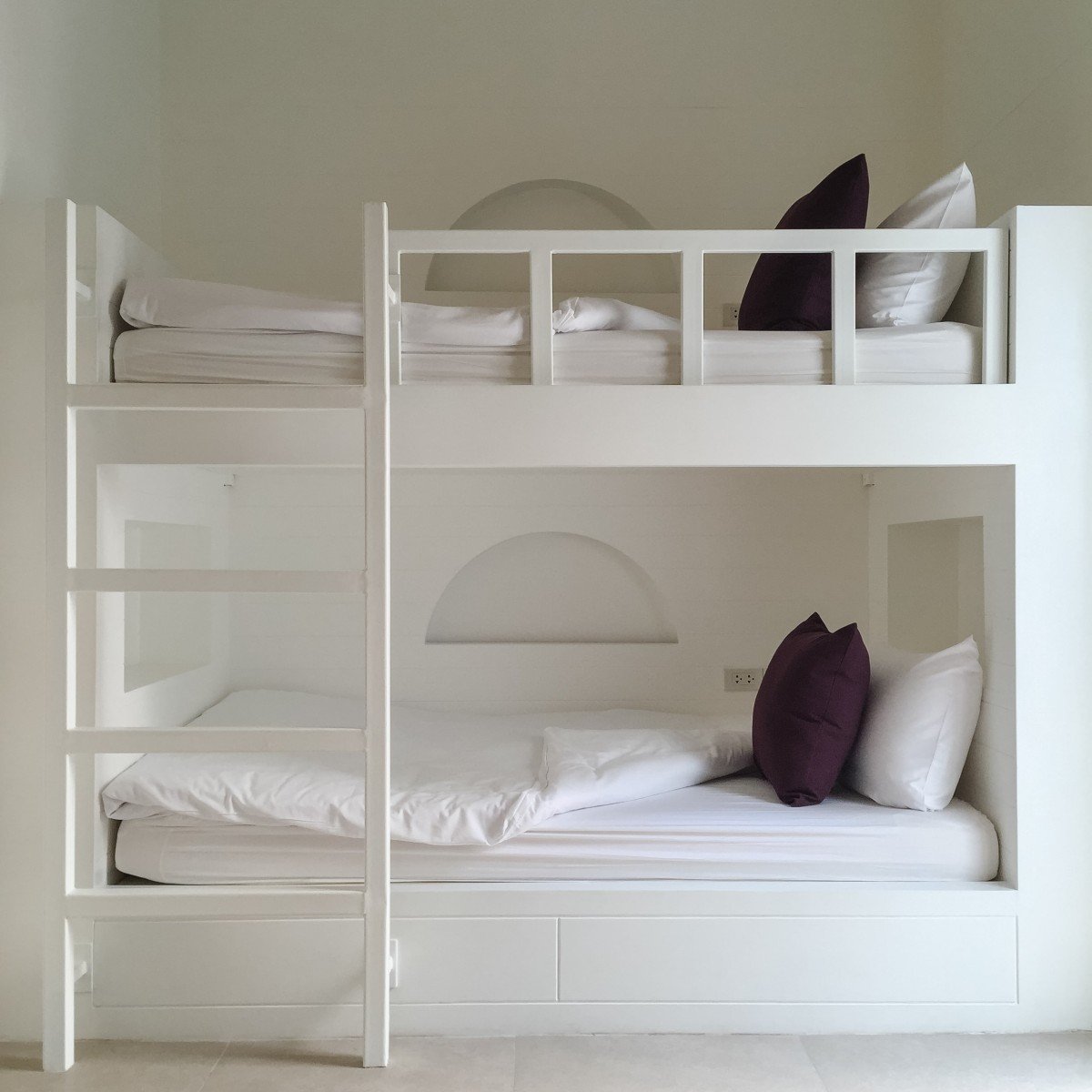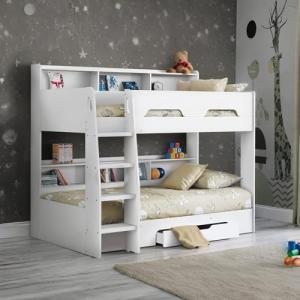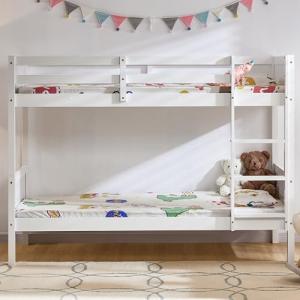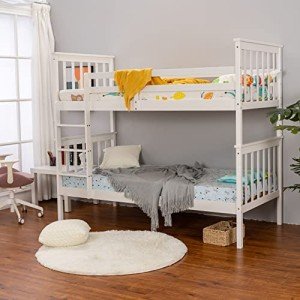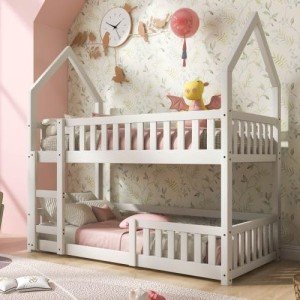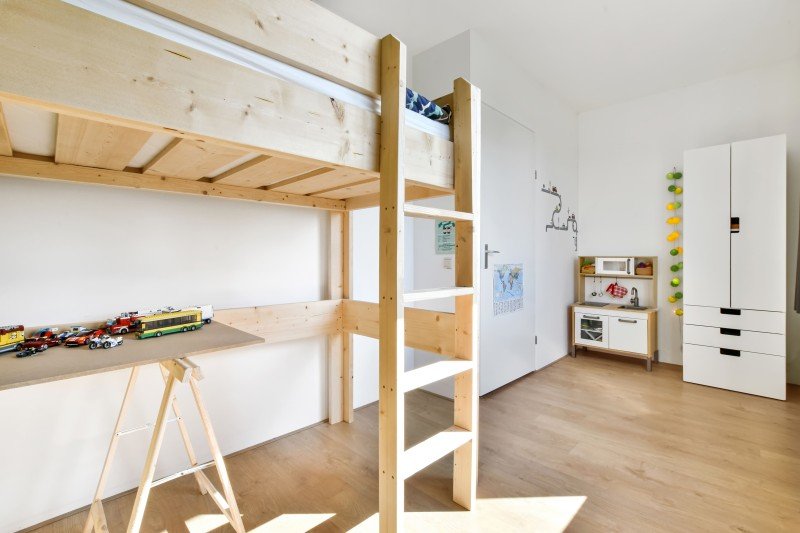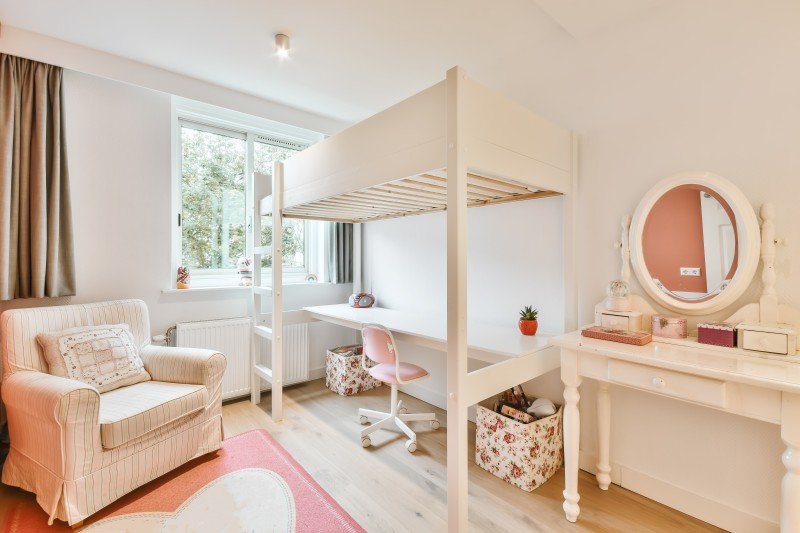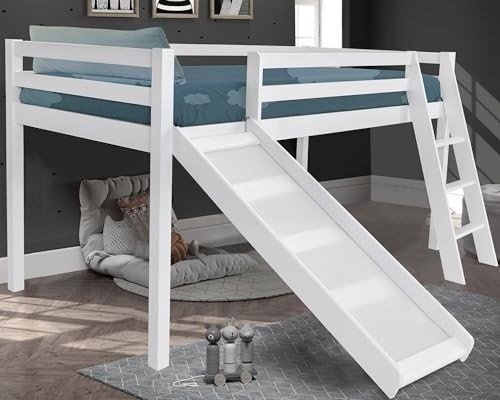Single bunk beds are a popular choice for many families and individuals looking to optimize space in a room without compromising on style or comfort. These versatile pieces of furniture come in various designs and configurations to suit different needs and preferences. Whether you have small children sharing a room, teenagers looking for a trendy sleeping solution, or guests staying over, single bunk beds can be a practical and fun addition to any space.
Types of Single Bunk Beds
When it comes to single bunk beds, there are several styles to choose from, each offering unique features and benefits. Here are the most common types:
Standard Single Bunk Beds
The traditional single bunk bed features a simple design with one bed stacked on top of the other. This classic configuration is ideal for children of similar ages or for maximizing space in a compact room. With built-in ladders or stairs for easy access to the top bunk, standard single bunk beds are a practical and space-saving choice.
L-Shaped Bunk Beds
L-shaped bunk beds are a modern twist on the traditional bunk bed design. By arranging the beds in an L-shape, this style creates more floor space in the room, allowing for additional furniture or storage options. L-shaped single bunk beds are great for siblings who want their own space or for creating a cozy nook for reading or relaxing.
Triple Bunk Beds
For large families or frequent guests, triple bunk beds offer the ultimate space-saving solution. These beds feature three sleeping surfaces stacked on top of each other, providing ample room for multiple children or guests. Triple bunk beds are a versatile choice for shared bedrooms or vacation homes where space is limited.
Considerations Before Buying
Before purchasing a single bunk bed, there are several factors to consider to ensure you make the right choice for your needs:
- Room Size: Measure the dimensions of the room where the bunk bed will be placed to ensure it will fit comfortably without obstructing other furniture or walkways.
- User Age: Consider the age and size of the individuals who will be using the bunk bed. Some bunk beds have weight restrictions or may not be suitable for very young children.
- Material: Choose a bunk bed made from sturdy and durable materials such as wood or metal to ensure it can withstand daily use and last for years to come.
- Storage Needs: If storage is a priority, look for bunk beds with built-in drawers, shelves, or trundle beds to maximize space and keep the room organized.
- Style Preference: Whether you prefer a classic, modern, or rustic look, there are single bunk beds available in a wide range of styles and finishes to complement your decor.
Setting Up Your Single Bunk Bed
Once you have chosen the perfect single bunk bed for your space, it's time to set it up for use. Follow these steps to assemble your bunk bed safely and efficiently:
- Read the Instructions: Before starting, carefully read the manufacturer's assembly instructions to ensure you have all the necessary parts and tools.
- Prepare the Area: Clear the room and create a spacious area to lay out the bed frame and components for easy assembly.
- Assemble the Frame: Begin by constructing the frame of the bunk bed according to the instructions, attaching the headboards, footboards, and side rails securely.
- Install the Guardrails: For safety, install guardrails on the top bunk to prevent accidental falls during sleep.
- Attach the Ladder: If your bunk bed includes a ladder, securely attach it to the bed frame to provide access to the top bunk.
- Test for Stability: Once the bunk bed is fully assembled, test the stability and ensure all connections are secure before allowing anyone to use the bed.
Safety Measures
Safety should always be a top priority when using single bunk beds to prevent accidents and injuries. Follow these essential safety measures to ensure a secure sleeping environment:
- Use Guardrails: Install guardrails on the top bunk to prevent falls while sleeping or moving around.
- Proper Mattress Fit: Use mattresses that fit snugly within the bed frame to prevent entrapment or gaps where a child could become stuck.
- No Jumping: Discourage children from jumping on or off the top bunk to avoid potential injuries.
- Secure Ladders: Ensure the ladder is securely attached to the bed frame and is easy to climb for safe access to the top bunk.
- Weight Limits: Adhere to the weight limits specified by the manufacturer to prevent overloading the bunk bed.
Maintenance Tips
To keep your single bunk bed in top condition and prolong its lifespan, follow these maintenance tips:
- Regular Cleaning: Dust and clean the bunk bed regularly to prevent dust buildup and maintain its appearance.
- Tighten Screws: Periodically check and tighten screws and connections to ensure the bed remains stable and secure.
- Rotate Mattresses: Rotate and flip mattresses on both bunks regularly to promote even wear and extend their longevity.
- Inspect for Damage: Check the bed frame, guardrails, and ladder for any signs of damage or wear and tear, and repair or replace parts as needed.
- Avoid Rough Play: Discourage rough play on the bunk bed to prevent unnecessary strain on the frame and components.
Benefits of Single Bunk Beds
Single bunk beds offer a range of benefits for various living situations and preferences:
- Space-Saving: Bunk beds are an excellent space-saving solution for small rooms or shared spaces, maximizing floor space for other furniture or activities.
- Cost-Effective: Bunk beds are often more affordable than purchasing two separate beds, making them a budget-friendly option for families.
- Versatile: Bunk beds can accommodate different sleeping arrangements, from siblings sharing a room to overnight guests staying in a spare room.
- Fun and Functional: Children and teenagers often enjoy the novelty of sleeping in a bunk bed, making bedtime more exciting and enjoyable.
- Storage Options: Many bunk beds come with built-in storage drawers or shelves, providing additional space to keep toys, clothes, or bedding.
Where to Buy Single Bunk Beds
Whether you prefer shopping in-store or online, there are numerous places to purchase single bunk beds:
- Furniture Stores: Visit local furniture stores or chains specializing in bedroom furniture to view a selection of bunk beds in person.
- Online Retailers: Explore online retailers such as Amazon, Wayfair, or IKEA for a wide range of single bunk bed options and convenient delivery.
- Secondhand Markets: Check out secondhand stores, garage sales, or online marketplaces like Craigslist or Facebook Marketplace for pre-owned bunk beds at discounted prices.
- Direct from Manufacturers: Some bunk bed manufacturers sell directly to consumers through their websites, offering customizations and direct customer support.
Factors Affecting the Price
The price of single bunk beds can vary depending on several factors, including:
- Quality of Materials: Bunk beds made from solid wood or metal tend to be more expensive than those made from particle board or plastic.
- Design Complexity: Intricate designs, custom finishes, or built-in storage options can increase the cost of a bunk bed.
- Brand Reputation: Well-known brands or designer bunk beds may come with a higher price tag due to their reputation for quality and style.
- Size and Configuration: Triple bunk beds or L-shaped designs typically cost more than standard single bunk beds due to their larger size and added features.
- Extras: Additional features such as matching bedding sets, mattresses, or assembly services can contribute to the overall price of a bunk bed.
FAQs
What are the weight limits for single bunk beds?
The weight limits for single bunk beds can vary depending on the design and materials used. It is essential to check the manufacturer's specifications for weight restrictions to ensure the safety and longevity of the bunk bed.
Can single bunk beds be separated into two individual beds?
Some single bunk beds are designed to be easily separated into two individual beds, providing flexibility as children grow or if the bunk bed is moved to a different room. Check the product description or contact the manufacturer for more information on this feature.
Are single bunk beds suitable for adults?
While single bunk beds are typically designed for children or teenagers, there are adult-sized bunk beds available for larger individuals. Be sure to check the dimensions and weight limits of the bunk bed to ensure it can comfortably accommodate adult users.
How can I maximize space with a single bunk bed?
To maximize space with a single bunk bed, consider additional storage options such as under-bed drawers, built-in shelves, or a trundle bed for extra sleeping space. Organizational accessories like hanging organizers or bedside caddies can also help keep the room tidy and clutter-free.
Do single bunk beds come with storage options?
Many single bunk beds come with built-in storage options such as drawers, shelves, or a trundle bed that can be used for additional sleeping space or storage. These features are ideal for small rooms or shared spaces where maximizing space is essential.
What materials are single bunk beds typically made of?
Single bunk beds are commonly made from wood, metal, or a combination of both materials. Wood bunk beds offer a traditional and sturdy design, while metal bunk beds are often more lightweight and modern in appearance. The choice of material depends on personal preference and desired durability.
Single bunk beds are a versatile and practical sleeping solution for various living situations, from shared children's bedrooms to guest accommodations. By considering factors such as room size, user age, and material quality, you can choose the perfect bunk bed to suit your needs. Remember to prioritize safety, follow maintenance tips, and explore the range of designs and features available to find the ideal single bunk bed for your space. Whether you opt for a standard, L-shaped, or triple bunk bed, the benefits of single bunk beds are sure to enhance your living space and provide a comfortable and stylish sleeping arrangement for years to come.
